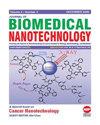MicroRNA-153 Restrains Cell Metastasis and Epithelial–Mesenchymal Transition in Cervical Carcinoma by Targeting SATB1 and Regulating Wnt/β-Catenin Pathway
IF 2.9
4区 医学
Q1 Medicine
引用次数: 0
Abstract
As a malignant tumor, cervical cancer (CC) seriously affects women’s life and health. Various microRNAs (miRNAs) are involved in tumorigenesis of CC. Here, we mainly paid attention to the effect of miR-153 in CC. RT-qPCR or Western blot was employed to quantify miR-153 or SATB1 expression. Molecular mechanism of miR-153/SATB1 was detected by Transwell and dual-luciferase assays. MiR-153 was downregulated in CC. Furthermore, upregulation of miR-153 restrained cell metastasis. Upregulation of SATB1 was detected in CC, and negative connected with miR-153 in CC cells. Knockdown of SATB1 suppressed cell metastasis in CC. The inhibitory effect of miR-153 was abolished by upregulation of SATB1. Besides that, miR-153 blocked EMT and downregulated p-β-catenin expression in CC cells. MiR-153 restrains cell metastasis and EMT in CC by targeting SATB1 and regulating Wnt/β-catenin pathway.MicroRNA-153 通过靶向 SATB1 和调控 Wnt/β-Catenin 通路抑制宫颈癌的细胞转移和上皮-间质转化
宫颈癌(CC)作为一种恶性肿瘤,严重影响着女性的生活和健康。多种微RNA(miRNA)参与了CC的肿瘤发生。在此,我们主要关注 miR-153 在 CC 中的作用。采用RT-qPCR或Western blot定量检测miR-153或SATB1的表达。通过Transwell和双荧光素酶实验检测了miR-153/SATB1的分子机制。CC中的miR-153被下调。此外,miR-153 的上调抑制了细胞的转移。在 CC 中检测到 SATB1 的上调,并且在 CC 细胞中与 miR-153 呈负相关。敲除SATB1抑制了CC细胞的转移。SATB1的上调会取消miR-153的抑制作用。此外,miR-153还能阻止EMT,并下调CC细胞中p-β-catenin的表达。MiR-153通过靶向SATB1和调节Wnt/β-catenin通路抑制CC细胞的转移和EMT。
本文章由计算机程序翻译,如有差异,请以英文原文为准。
求助全文
约1分钟内获得全文
求助全文
来源期刊
CiteScore
4.30
自引率
17.20%
发文量
145
审稿时长
2.3 months
期刊介绍:
Information not localized

 求助内容:
求助内容: 应助结果提醒方式:
应助结果提醒方式:


